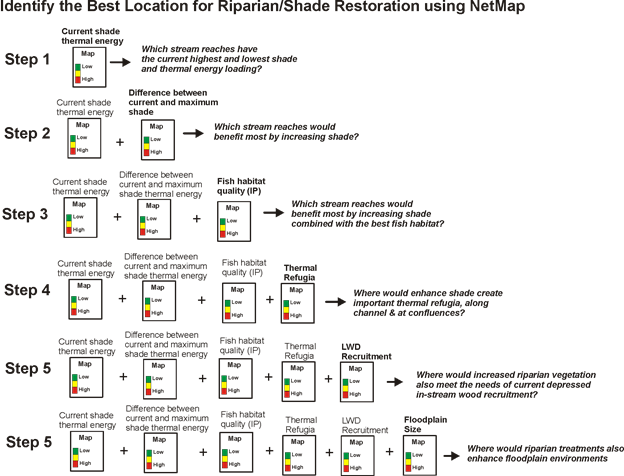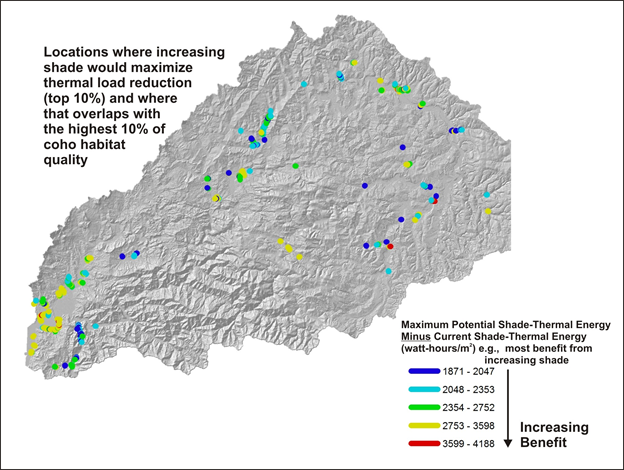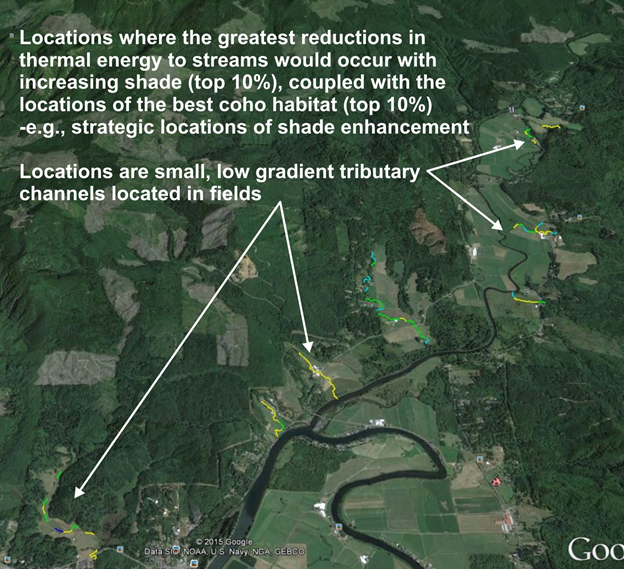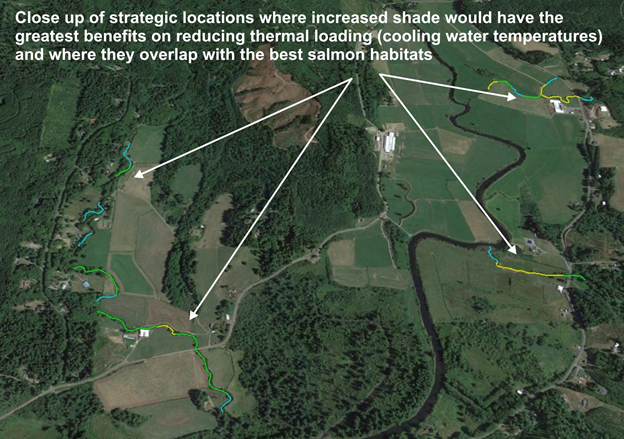| < Previous page | Next page > |
8.4 Shade/Thermal EnergyThis NetMap tool has two components.
Thermal Load Sensitivity: This tool is used to calculate three components of in-stream thermal loading
Current Shade-Thermal Loading: This tool is used to predict how current shade conditions (currently using basal area and tree height) interacts with bare earth thermal energy to yield the present day thermal energy load to individual stream reaches. In addition, the tool calculates the difference between a the maximum potential shade given the current watershed vegetation conditions (basal area and tree height) and the current shade (or using an analysts estimate of maximum shade), thus providing an estimate of where it would be most effective to increase shade along stream reaches.
The current shade-thermal loading is also used to calculate certain aspects of thermal refugia, another NetMap tool under Vegetation/Fire/Climate.
NetMap contains a suite of tools and parameters that can be used to conduct watershed to state wide assessments of current shade and its effect on in-stream thermal energy. Shade-thermal energy can be combined with other ecological indicators of riparian and channel (fish habitat) conditions so that the best locations for increased shade/riparian treatments can be identified.
Combine calculations of shade and thermal energy with fish habitat quality, thermal refugia, in-stream wood recruitment and floodplains. For example, using NetMap, quickly search for and identify locations where the stream reaches that would benefit most by incresasing shade (Step 2 below), say the top 10% of sites overlap with the best salmon habitat (top 10%). Or where the top 10% of shade restoration sites overlaps with the highest fish habitat potential, and where those sites overlap with forests with very low wood recruitment potential and in areas of the widest floodplains. Maximize your restoration effectiveness! See examples below.
 EXAMPLES of Searching for Optimized Locations to Enhance Shade (Nehalem Watershed)
   |